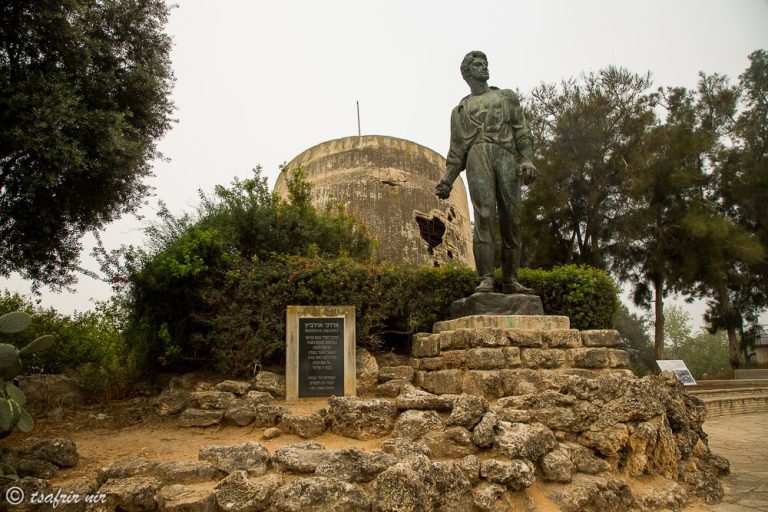The Momument of Mordechai Anielewicz
On a hill at the center of the kibbutz stands a monument in memory of Mordechai Anielewicz, which was installed in 1951 by sculptor Nathan Rapoport. Other famous pieces by Rapoport include the monument for the fighters and the fatalities of the Warsaw Ghetto Uprising in Poland, an identical monument in Yad Vashem’s Warsaw Ghetto Plaza, and a statue commemorating the fallen soldiers at Kibbutz Negba.
The statue depicts a young man holding a hand-grenade, looking toward the horizon and the museum. It stands on a stone base, is approximately four meters tall, and is one of the most famous icons of Holocaust commemoration in Israel and around the world.
Beside the monument are the remains of the water tower of Kibbutz Yad Mordechai, which was built by members of the kibbutz and dedicated at a celebratory ceremony in 1946. During the battles that were fought at Yad Mordechai in 1948, the sight of the tower on the hill was a source of pride and steadfastness for the fighters in the rifle pits. The tower was ultimately hit and toppled by Egyptian shelling, and the kibbutz members decided to leave its remains where they were.
The statue of Anielewicz, leader of the Jewish Fighting Organization (Zydowska Organizacja Bojowa – ZOB) in the Warsaw Ghetto, and, beside it, the remains of the shelled water tower, a hero of sorts of the battles of 1948 at Yad Mordechai, constituted one of the first visual expressions of the phrase “from Shoah to revival.” The monument’s plaza contains a covered shelter for assembly and instruction; audio stations in Hebrew, Russian, and English; and a spacious area for the holding of ceremonies, among other things. The monument is disabled and stroller accessible.





